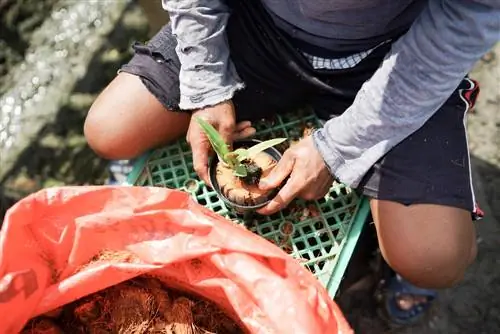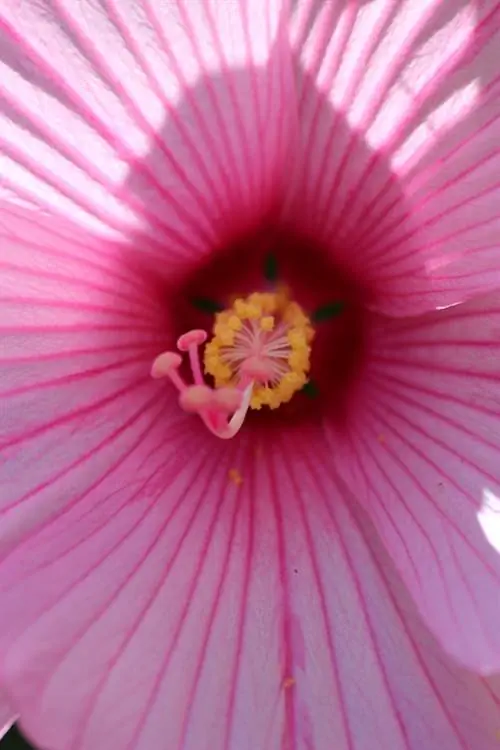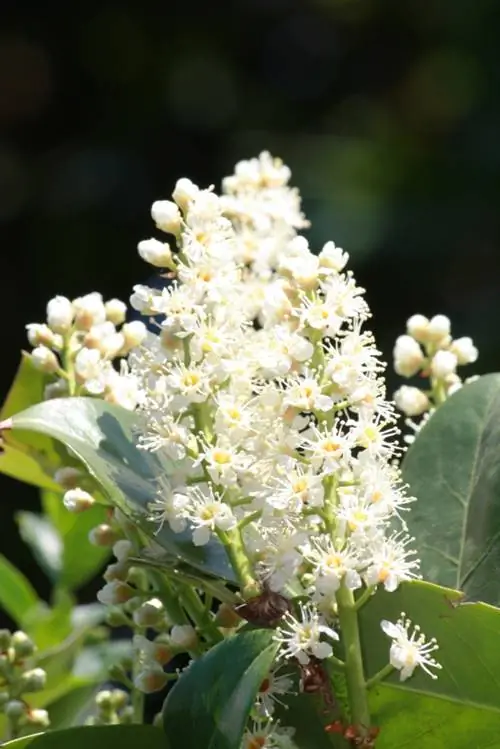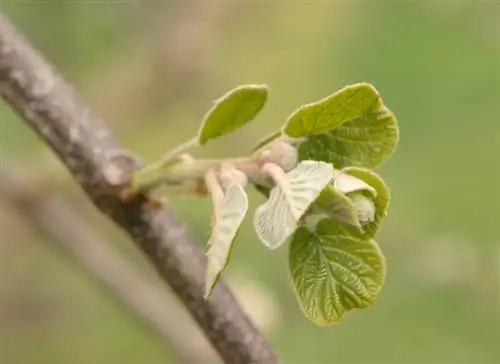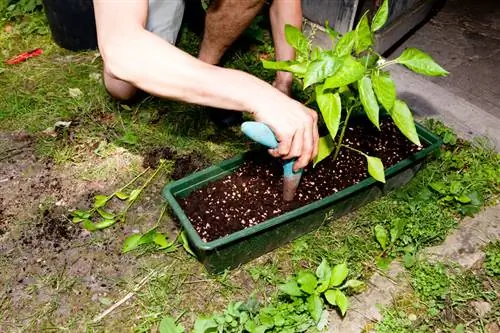- Author admin [email protected].
- Public 2023-12-16 16:46.
- Last modified 2025-01-23 11:21.
Cymbidium grows relatively quickly and can be quite large. The plant pot quickly becomes too small, so you have to repot the orchid more often. What do you need to consider when repotting a Cymbidium?

How should you repot a Cymbidium orchid?
When repotting a Cymbidium orchid, this should be done after flowering, use a slightly larger pot with drainage, select the appropriate substrate and inspect the roots for damage. After repotting, fertilizer should not be applied for several months.
The Best Time to Repot Cymbidium
When the roots of the cymbidium grow out of the top of the pot, it is time for a larger pot. Always repot immediately after flowering.
Choosing the right pot
Like most orchids, Cymbidium likes a tight pot. The new pot should be just slightly larger than the previous one and have sufficient depth for the roots.
A large vent hole is necessary. You should also create drainage made of gravel in the bottom of the pot to prevent waterlogging from developing.
For larger pots, make sure they are sufficiently stable as they tip over easily.
Mix your own soil or buy it
Orchid soil is suitable as a substrate, which you can loosen up even further with bark mulch. The soil can also be easily mixed yourself.
For this you need peat, bark mulch and possibly a few polystyrene balls.
A mixture of compost, sphagnum and coconut fibers is also suitable as a substrate.
Repotting Tips
- Unpotting Cymbidium
- rinse old substrate
- Inspect roots for damage
- Share the plant if necessary
- fill in fresh substrate
- Planting orchids
Inspect the roots of the cymbidium for rotten and soft spots. Cut off such root parts and dispose of them.
Do not fertilize after repotting
Cymbidium orchids need slightly more nutrients than other types of orchids and are therefore more often supplied with orchid fertilizer.
After repotting, you must not fertilize the orchid for several months to prevent an oversupply of nutrients.
For orchids that have not been repotted, fertilize them during the growing season, which lasts from spring to summer. During this time the leaves grow and the flower shoots that form in winter can already be seen. Fortnightly fertilizer applications are completely sufficient during the growing season.
Tip
If you need to repot the cymbidium, you can divide it straight away to grow offshoots. To do this, separate bulbs with roots from the mother plant and place them in prepared pots.

